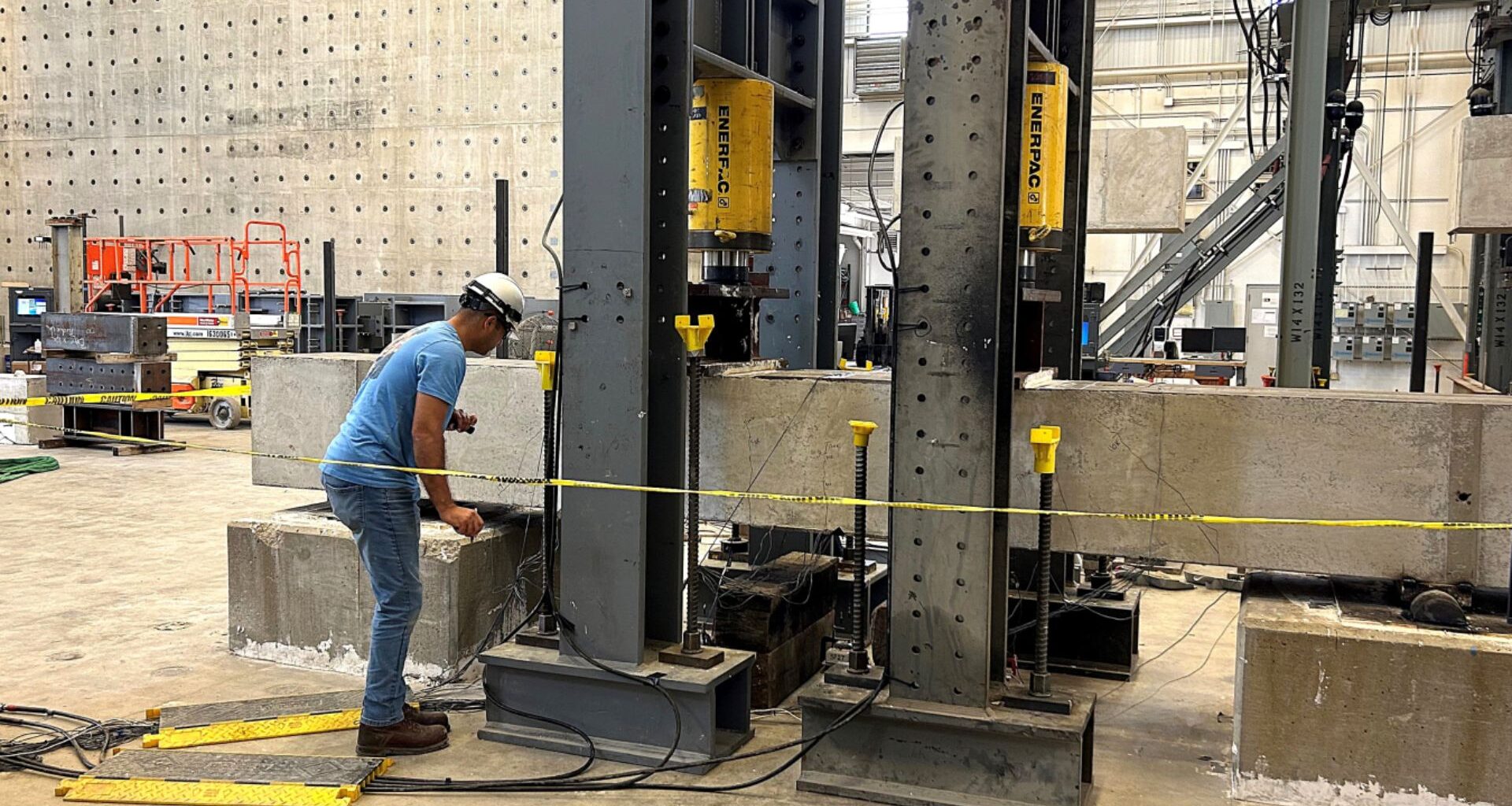A novel modular steel-concrete composite, which can significantly reduce the construction costs of nuclear reactors, has successfully passed a key test.
The Diaphragm Plate Steel Composite (DPSC), developed by a research team from GE Hitachi Nuclear, has demonstrated its viability through a series of stringent evaluations at Purdue University’s Bowen Laboratory.
“The successful design, fabrication and testing of DPSC modules demonstrates the potential of this advanced fabrication and construction technology to lead to cost savings and improved project schedules in the deployment of small modular reactors,” said Sean Sexstone, Executive Vice President, Advanced Nuclear, GE Hitachi.
Modular steel plates to replicate nuclear reactor wall
The development of this advanced construction technology is aligned with the US Department of Energy’s (DOE) strategic objectives to reduce the overall expenses associated with nuclear power plant construction by as much as 10 percent.
The DPSC system is one of three advanced methodologies under consideration by the DOE to achieve this goal.
During the recent tests, researchers filled the modular steel plates with concrete to replicate the structural integrity of a reactor containment wall.
The assembled specimens were then subjected to a range of loading conditions designed to simulate real-world stressors, including seismic activity.
“Researchers filled the modular plates with concrete to simulate a reactor containment wall and subjected the structure to various loading conditions to mimic real-life situations a reactor building might experience, such as an earthquake,” explained the researchers in a press release.
Results exceeded expectations
“The DPSC system tests at Purdue exceeded our expectations,” affirmed Luke Voss, Program Manager at Idaho National Laboratory. “We are very excited and enthusiastic about the use of this construction technology to help save time and money in the deployment of new nuclear reactors.”
The DPSC design incorporates a distinct methodology. It utilizes two continuous steel plates interconnected by adjoining plates featuring circular concrete flow apertures. This approach presents several advantages over conventional steel-concrete composite techniques.
The steel wall modules can be fabricated off-site in controlled environments and subsequently transported to the construction location while site preparations are in progress.
This modular approach significantly speeds up assembly and installation compared to traditional methods.
Additional advantages of the DPSC system include enhanced design flexibility – modules can be welded end-to-end or stacked vertically, and can even incorporate different steel types on either side of a wall to meet specific needs, like corrosion resistance. Quality control inspections are also expected to be faster.
Advanced non-destructive evaluation
The comprehensive data acquired during this initial demonstration phase will be instrumental in supporting the regulatory licensing process for the utilization of these modules in future reactor containment construction projects.
Data gathered from these successful tests will now be used to support the licensing process for using DPSC modules in future reactor projects.
“DOE’s National Reactor Innovation Center (NRIC) is currently evaluating a proposal from GE Hitachi to build a portion of a reactor containment building using the DPSC design for the walling system to further test the technology,” highlighted the researchers.
This future test would also integrate digital twin technology and advanced non-destructive evaluation techniques developed earlier in the project.
“GE-Hitachi plans to use the DPSC technique for its first four units of the BWXR-300 small modular reactor in Ontario, Canada,” concluded the press release.
